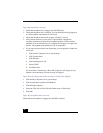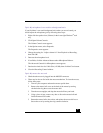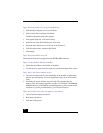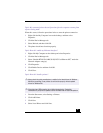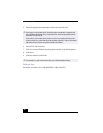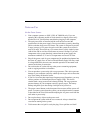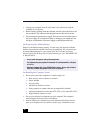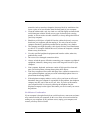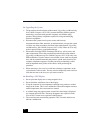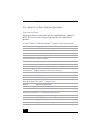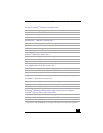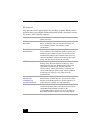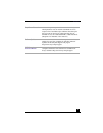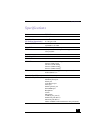
VAIO® User Guide
50
On Upgrading the System
❑
The procedures described in the online manual,
Upgrading and Maintaining
Your VAIO® Computer (PCV-J120),
assume familiarity with the general
terminology associated with personal computers and with the safety
practices and regulatory compliance required for using and modifying
electronic equipment.
❑
Disconnect the system from its power source and from any
telecommunications links, networks, or modems before you open the system
or follow any of the procedures described in the online manual,
Upgrading
and Maintaining Your VAIO® Computer (PCV-J120)
. Failure to do so may
result in personal injury or equipment damage.
❑
Electrostatic discharge (ESD) can damage disk drives, add-on cards, and
other components. Follow the procedures described in the online manual,
Upgrading and Maintaining Your VAIO® Computer (PCV-J120)
only at an
ESD workstation. If such a station is not available, do not work in a carpeted
area, and do not handle materials that produce or hold static electricity (for
example, cellophane wrappers). Ground yourself by maintaining contact
with an unpainted metal portion of the chassis while performing the
procedure.
❑
When removing a slot cover, be careful not to damage components on the
system board or add-on cards. You may need to temporarily remove add-on
cards that are next to the slot cover you want to remove.
On Handling a CRT Display
❑
Do not place the display near a strong magnetic force.
❑
Do not block the ventilation slots on the display.
❑
Using the computer in low temperature conditions may produce a residual
image on the screen. This is not a malfunction. When the computer returns to
normal temperature, the screen returns to normal.
❑
A residual image may appear on the screen if the same image is displayed
for a lengthy period of time. The image disappears after a period of time.
You can use a screen saver to prevent residual images.
❑
The screen becomes warm during operation. This is normal and does not
indicate a malfunction.



